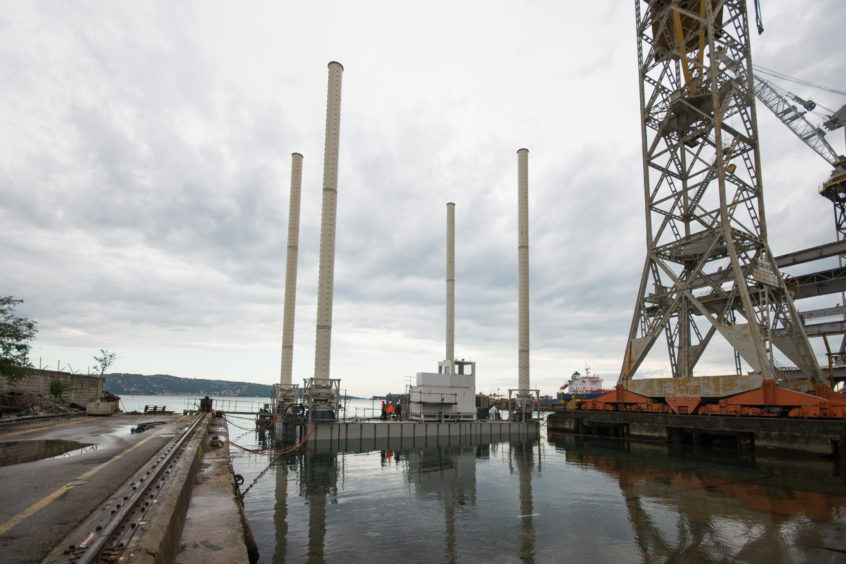
The UK energy market is transitioning, oil and gas is in slow decline, decommissioning is focussing on single lift solutions and the renewables market is in significant growth mode, albeit very cost driven.
UK energy contractors need to adapt their thinking to focus on cost effective solutions for the UK energy market, while expanding their operations to the global energy markets.
Being cost effective does not always mean lower margins – lower overall costs can be achieved by efficient operations. This may be accomplished by detailed procedures, good planning and using the right equipment and people for the project.
With this in mind Innovo focuses its design engineering on modular construction for in-house rental and sale equipment. The question we always ask is, ‘can we move this piece of equipment efficiently and cost effectively around the world?’.
The answer is the equipment needs to be of a modular design and construction, fits in standard 40 feet containers and can be assembled easily using locally supplied resources with minimal supervision.
A demonstration of this philosophy is Innovo’s Innofloat Modular Pontoons. They are fast to deploy, robust and a lower cost alternative to conventional barges.
Innofloat modular pontoons are designed to be placed into the water and assembled into larger units, the shape and size of which are determined by the client’s operational requirement.
The pontoons are supplied in standard container sizes, supplied with the CSC (Container Safety Convention) certificates and plates, which enables them to be shipped as standard containers within standard shipping procedures on normal container carrier vessels.
This innovation reduces shipping time and costs significantly compared to standard pontoon transit time and costs, and importantly without compromising reliability or quality of the end product.
Each pontoon is manufactured in compliance with BV and RINA class requirements meaning ancillary equipment can be mounted onto the assembled hull. Using a specially designed patented connection system, the pontoons are joined together at the mobilisation location to form a flat barge hull.
As an example, Innovo designed and supplied a 30 metre hull for a barge to dredge the access channel to the port of Ambriz in Angola. Eight Innofloat pontoons (6 x 12 metres and 2 x 6 metres) were supplied with their own CSC certificates and plates, enabling them to be shipped as standard containers, reducing shipping time and costs by over 70 per cent compared to standard modular pontoon costs.
Innovo’s well-established, reliable supply chain enabled it to deliver the modular pontoons, complete with bollards and other ancillary equipment, in just 57 days.
Featuring a flat bottom and minimal draft, the Innofloat pontoons are ideally suited for the shallow water depths of harbours, port channels and nearshore coast lines.
Innovo can add a patented jacking system which enables the modular pontoons to be elevated out of the water making them ideally suitable for nearshore renewables and civil engineering projects.
As examples of barges supplied with jacking systems, Innovo delivered two modular jacking barges for the Mediterranean Sea to be used with geotechnical and scientific equipment for collecting samples and data from the seabed.
The barges were 15 x 12 metres (spud length 24 metres) and 24.4 x 17.07 metres (spud length 36 metres), configured by assembling 20 feet, 40 feet standard modules, both with maximum deck loading of 6mT/m2. Each modular jacking barge was equipped with 3-off propellers to control the position when is in floating configuration.
Innovo’s Innofloat product line is just one example of how its modular engineering design and construction supports efficient and cost effective global operations.

